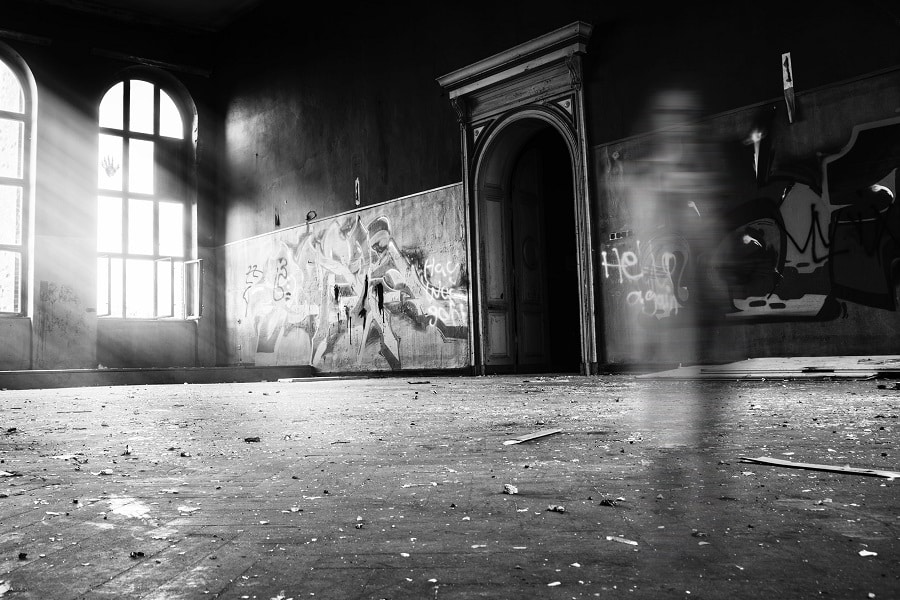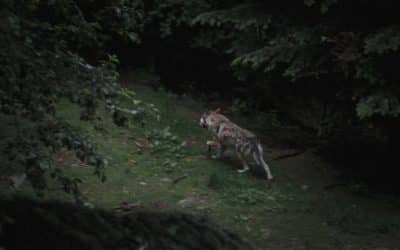
Feature
Supernatural Procedurals
Carmen Cady
A sinister plan to rule the world. A missing person, a gruesome murder, a coverup, the hunt for a serial killer. These are the plots we thriller readers crave. We meet some of our most beloved heroes and heroines in these stories. The ones we love to follow—the Amos Deckers, the Harriet Blues, the Elise Sandbergs of the thriller world. We follow—with dedication and loyalty—the detective, the agent, and the investigator.
We’re moved by their flaws and frustrated about their red tape hurdles. We love their cowboy ways and their by-the-book practicalities. They are the men and women we trust to take us through the maze of intrigue, deception, and foul play. Rooting for them, shocked by what they discover, fearing for their safety, yet we latch onto their story. We stand with them hoping for redemption, salvation, and plain ol’ justice.
Can a supernatural police procedural capture the hearts and minds of thriller seekers in the same way as a traditional police procedural? After all, there’s no basis in reality. The neighbor can’t really be a vampire, can she?
Why We Love The Police Procedural
What is it about the police procedural that keeps us coming back for more? Because let’s face it, we know the story. Someone broke the law—a murder most foul. Enter the protagonist, a detective not in his or her finest moments. Maybe they’re on administrative leave. Or they’re drinking their loneliness away. We may find them at a crime scene berating an officer for not securing the perimeter. Then the story builds, creating a world and a cast of characters. We learn about the bureaucracies working against our detective, the new partner he doesn’t want, and we gain greater insight into the detective’s skill—the efficiency, experience, and the knowhow to get the job done. No matter what.
Here comes forensics—the fingerprint analyst, the psychologist, or anthropologist whose job is to apply science to the evidence. We need them to add layers to the story. To support our detectives. The one we’re gaining trust in. We know their brashness comes from care. After all, she has a job to do.
The story weaves through opposing forces and hurdles the detective must overcome. A chief who won’t approve additional resources, the other law enforcement agent who’s claiming jurisdiction, and a trail which goes cold. Add the pressure of time. And the detective’s instinct prompting him to ignore the chain of command.
What makes the story juicy is the suspects—the secrets they hold and the craftiness of their behavior. Each suspect is guilty of something, and we are bent on discovering what it is.
And the story. It’s grounded in a world we believe. I mean, it happens, right? It could be as close as the next-door neighbor. We’ve seen it. Just turn on your television.
Many of us are familiar with the police procedural because of television shows like CSI, SVU or NCIS—choose your acronym. A crime is committed each week, and through policing techniques and strategies, the evil mastermind is caught. Order and justice wrapped in a perfect package.
In these shows, we learn about DNA analysis, Tyvek suits, canvassing the streets, lividity, and how to get a suspect to talk—legally and illegally. We watch true crime depicted on shows like Unsolved Mysteries or Cold Case Files. True crime novels like John Grisham’s The Innocent Man paint a picture. One that confirms the plausibility that somehow the police are in on it. Whatever it is.
Essentially, the police procedural starts with a crime. The crime can be one or many. It can affect a family, a town, a country, or the world. Time is running out and we need the good folks of law enforcement to save the day.
I’ve wondered if it’s a naïve romanticism which captures my attention for the police procedural. Sounds silly considering I’ve a basic education on policing from college and know the reality of policing differs from how it’s depicted on the screen. Yet, for whatever reason, the screen has shaped my expectations of the suspense thriller.
Movies, television, and books create a stage for the police procedural to unfold. They pepper truths into a world of fiction. These fictional worlds have created and reinforced the elements we expect.
Supernatural Thrillers and Police Procedurals
As a reader I wonder, how these by-the-book standards and sinister plots hold up in a supernatural thriller? Does the police procedural recipe turn out the same decadence in a supernatural world?
There are other important elements in a traditional police procedural I haven’t mentioned. Ones which are applied to the supernatural police procedural. These are elements we find in general fiction, like imagination and the suspension of reality. Escapism—to leave our lives for a moment and enter someone else’s reality.
Perhaps you’ll argue a supernatural thriller can’t be a police procedural. They involve too many otherworldly elements. Elements too far out there to capture any semblance of reality. I could argue about some aspects of the traditional police procedural that aren’t based in reality. But I won’t. Not now. Maybe another time. Instead, I’ll break down the elements of a supernatural police procedural and see how well they fit our expectations.
It starts with world building. When a story includes a supernatural law enforcement, we need to know: Does this world interact with the non-supernatural world? And if so, are the interactions plausible?
Let’s look at a couple of books which blend these worlds well.
Charley Davidson
One of my favorites is Darynda Jones’s Charley Davidson series. Charley, born to human parents, is a private investigator and as we discover in the first few chapters, is the grim reaper. Her father is a retired law enforcement officer, and she works with her uncle, a police detective with the Albuquerque Police Department to solve homicides. Charley’s on the APD payroll as a consultant. Her sleuthing skills have an advantage—she can see, hear, and talk to dead people. Her sidekicks include both the human and supernatural, including the FBI, who by working together, solve crimes against humanity. She soon discovers bigger forces are at work, and she must stop them to save her family and the world.
This is a snippet of Charley’s journey, but the elements of the expected police procedural are at play in this story. We have a misunderstood hero and her cowgirl ways with “a very particular set of skills” as Liam Neeson says in the movie Taken. She works within the boundaries of human law. There’s a chief of police who doesn’t like her, but needs her. And we have the other law enforcement agency which gets in her way. Woven into this story is the use of crime scene investigative procedures, a mystery to unravel, suspicious characters with all the right attributes—revenge, jealousy, power, and greed. It’s all there. So what if there are ghosts and demons in this world?
Quentin Black
Let’s dissect another one. JC Andrijeski’s Quentin Black Paranormal Mystery Series. Miriam Fox is a forensic psychologist criminal profiler who contracts with the San Francisco Police Department. Her best friend Nick, a police detective, calls her in for a profile on a suspect they have in custody, someone they believe is a killer. He must be the killer because he’s covered in blood and was found at the crime scene. Miriam has a unique ability. She can get into the minds of those she profiles. The problem she faces this time is this suspect knows her secret even better than she. The story thrusts SFPD detectives, intelligence agents, and their current suspect’s security firm into a mad chase to find the actual killer.
In this book too, we find the expected elements of the police procedural—the use of forensic evidence, the strains of interagency work, the loneliness of being different, following instinct in the face of opposing evidence, a unique skill set used to solve the crime, and deception and betrayal. Included are the larger forces at work which must be stopped at all costs. Time is of the essence.
Again, many of the elements of the police procedural exist in this book. Does it matter if we’re dealing with seers, other worlds, and alien contraptions?
Suspension of Disbelief
There are other supernatural police procedurals which deal strictly with the supernatural world. For instance, a reader meets a vampire detective who works for a vampire law enforcement agency. These stories are plausible if they include the elements of the police procedural we’ve become so fond of.
As readers of these types of stories, in order to suspend reality, we must understand the role of the supernatural detective, the supernatural laws they’re protecting, and why it matters when those laws are broken. In a supernatural police procedural, an author will need to address the extraordinary abilities—hearing, seeing, strength, shifting, magic, etc. For instance, how do you keep a vampire with extraordinary strength in a human jail cell? What about a magical being who could “poof” their way out?
There are definite elements we expect in a police procedural, and in any world and at any historical period, those elements can work. We’ve seen them work in other genres like fantasy and science fiction, and they can be equally effective in a supernatural story. To be effective, it boils down to our expectations, the plausibility of those expectations, and how the characters interact in the foreign world we’ve immersed ourselves in. Crafted well, we won’t blink twice at the ghost who leads us to discover a murder weapon or the demon detective who saves humanity.
About the Author
Carmen Cady lives in Washington State or otherwise known as the Evergreen State. Some may ask how she likes all the rain? She wouldn’t know because she lives on the desert side of the State.
She has a master’s degree in education and business, specializing in accounting, and works full-time in the accounting world. In a previous life, she worked in the behavioral health industry.
She writes in the world of fiction, enjoying the adventure and twists and turns of murder, mystery, and mayhem with a dash of romance. She’s an avid reader and has spent all but the last ten years reading nonfiction. Now she gets lost in thrillers and romance, reading up to three books per week.
More at carmencady.com

More Supernatural Features
Shapeshifters in Thrillers
Skin walkers. Shapeshifters. Gods.
The Clairvoyant Explained
Clairvoyants in books, movies, and popular culture
Paranormal Mysteries & Thrillers
A Librarian’s Approach to Reading Paranormal Mysteries and Thrillers
Advertisement



